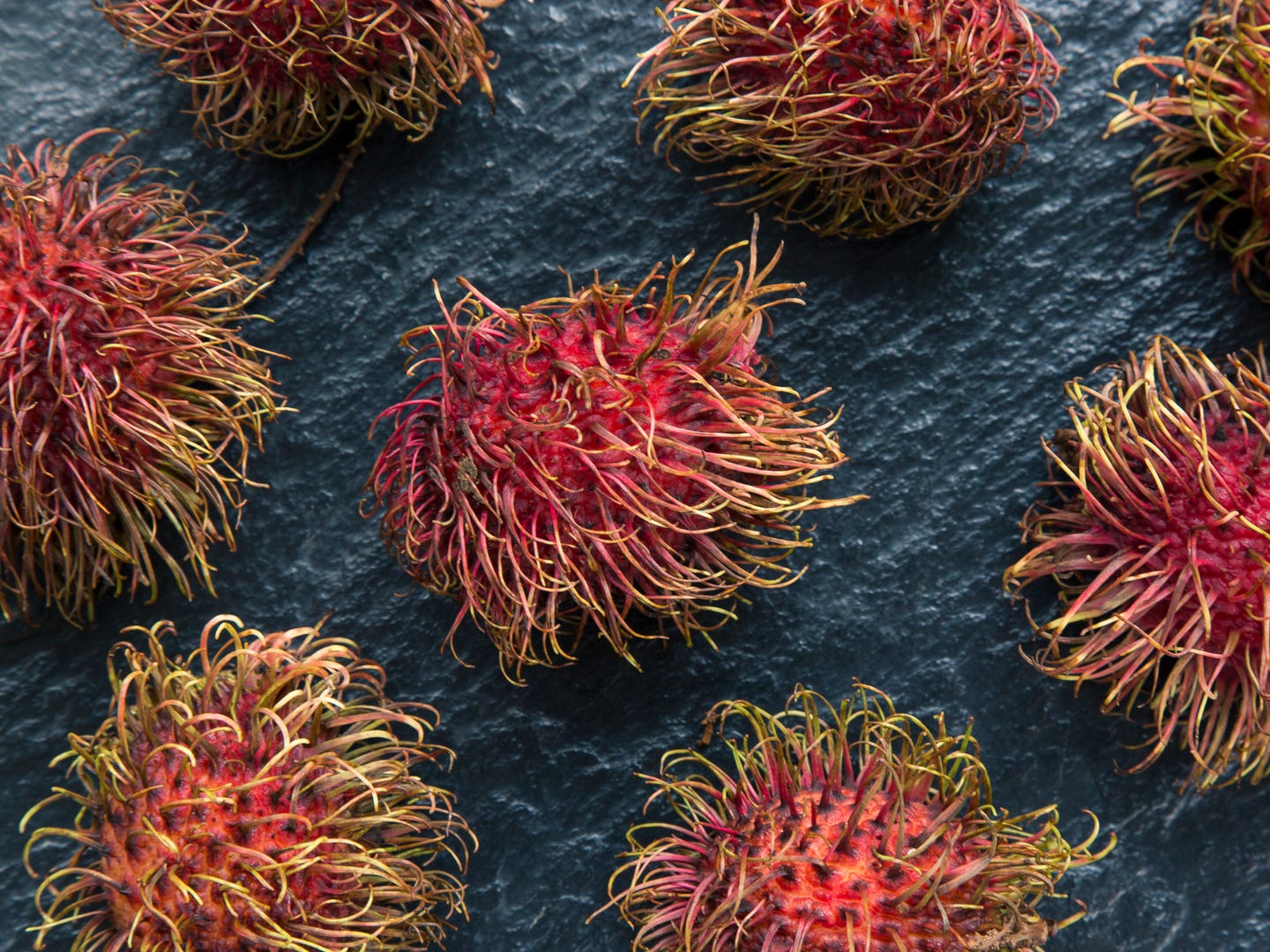
Growing up in Queens, New York, I was exposed to a great deal of Asian cuisine. The typical lunchbox trades in the school cafeteria were not for chocolate or pretzels, but for sheets of nori and Pocky biscuit sticks. One of my favorite treats was a small gelatin candy with lychee in the center. Floral and with a distinct gumminess, these candies were worth trading away my PB&J any day. I eventually discovered that my grandmother, who was always happy to see me eat something unusual, shared a love for lychee. One day, after rifling around in the pantry for a bit, she pulled out a can of something she claimed was similar to lychee but even better: rambutans in syrup. Chewy and sweet, they were just like lychee, but larger and with a richer, creamier texture.
I always assumed I would only be able to enjoy this strange fruit in its canned version since it is native to Malaysia and difficult to find in the United States. However, walking through a local market recently, I spotted a display of fresh lychee nuts, and tucked in the corner of the display, looking as if the lychees sprouted long maroon hairs, were fresh rambutans. I quickly snagged a bunch and returned to the test kitchen. The fresh version was a new experience, providing the same richness in flesh with a much cleaner and delicate flavor. Most areas that grow rambutans harvest them twice a year, in late fall/early winter and then for a short period in early summer. While they are typically enjoyed raw or stewed in a sugar syrup, I knew I wanted to use their sweetness in a savory dish. The resulting recipe serves tender chicken and rambutan in a spicy, but light broth. This curry is simultaneously rich and refreshing.
Keep Reading
Continue to Next Story










